“Imagine a city where graffiti wasn’t illegal, a city where everybody could draw whatever they liked. Where every street was awash with a million colours and little phrases. Where standing at a bus stop was never boring…Imagine a city like that and stop leaning against the wall – it’s wet.”
— Banksy, Wall and Piece
“I would not advise you going to Sássari,” our host Mario said at breakfast on our third morning in Alghero. “It is not very good at all.”
We should have listened to him, right? Two tourists from London vs. a native Sardinian.
Surely, he knew best.
Our pocket guide to Sardinia said much of the same, describing the city as “surrounded by unsightly swathes of industry.” But the day before, we had taken a trip to Bosa, another nearby town of about 8,000, and found it deserted. We’d wandered the streets, the only sound that of our own footsteps echoing off the cobblestones, in search of someone, anyone, to lend us a little interaction.
And so the allure of Sásseri, the island’s second largest city after its capital of Cagliari, was not so much that it was picturesque–Alghero and Bosa had already given us that–but that it might hold a bit more of life, more people and more goings-on.
The guidebook even told us that Sásseri is home to the first university built on Sardinia in the 16th century and how because of this, the city is often considered the island’s intellectual capital. One of my chief rules-of-thumb is to always take a guidebook’s claims with a grain of salt, but whether or not it was exaggerating, Sásseri sounded promising.
An hour’s bus ride later, Claire and I began making our way from the station into the city center. We soon came upon an image on a side wall–that of a man in a tuxedo with the head of a fish. I loved the wide-eyed fish and the pose the man had struck, with his hands turned up and his knee turned in, as if frozen forever on the dance floor.
This simple discovery suddenly gave my day in Sásseri a sense of purpose–to keep a look out for more street art, for graffiti that might have a little more to say than, “X was here.”
As the day wore on, we could see where Mario might have been coming from, from the shapeless graffiti that tagged many of the city’s buildings to the piles of rubbish that lay strewn down gutters and sidewalks, but I found that with a little deliberate thinking, I could look past the bad and see the beauty that did exist.
Street art always seems to suggest a subtle streak of rebellion, a bit of counter-cultural thinking, and I liked that we’d found such a side to Sásseri.
As Banksy himself says, “Speak softly, but carry a big can of paint.”

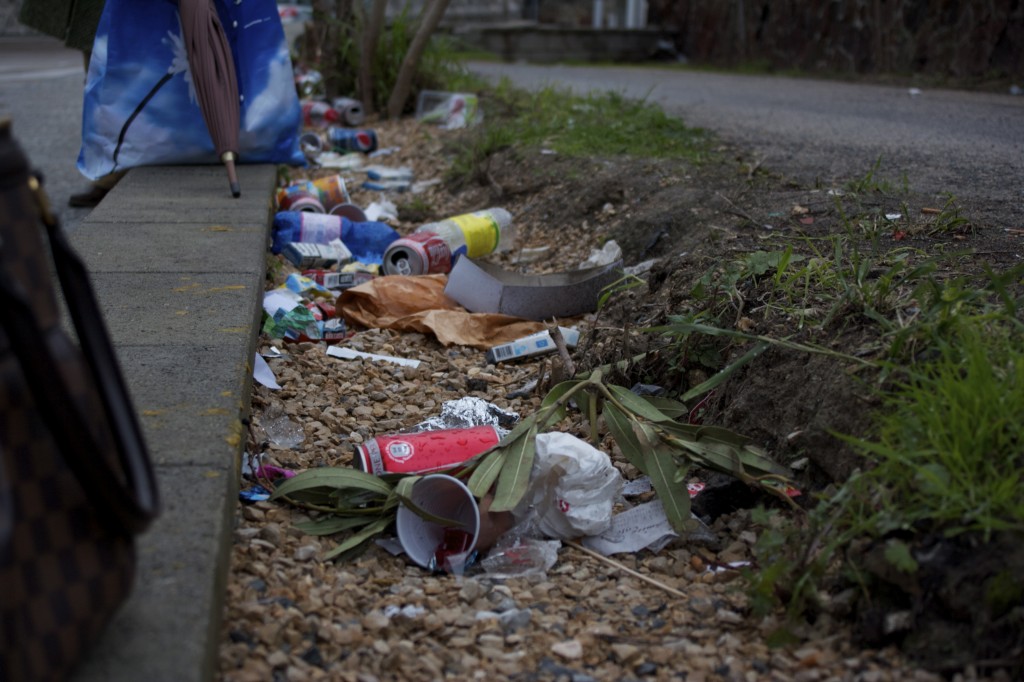
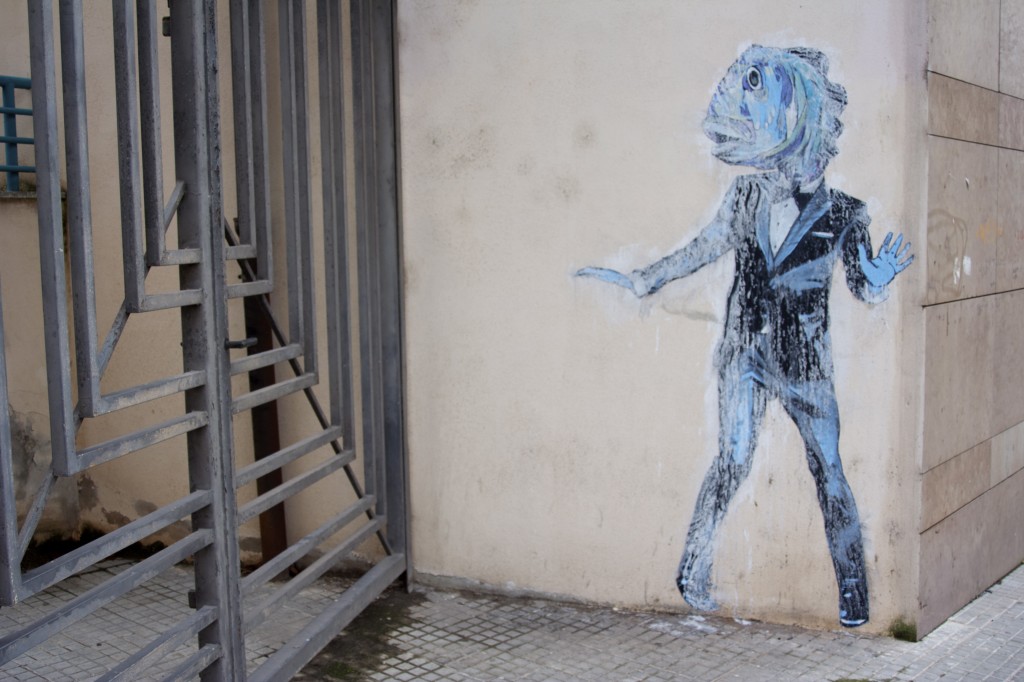
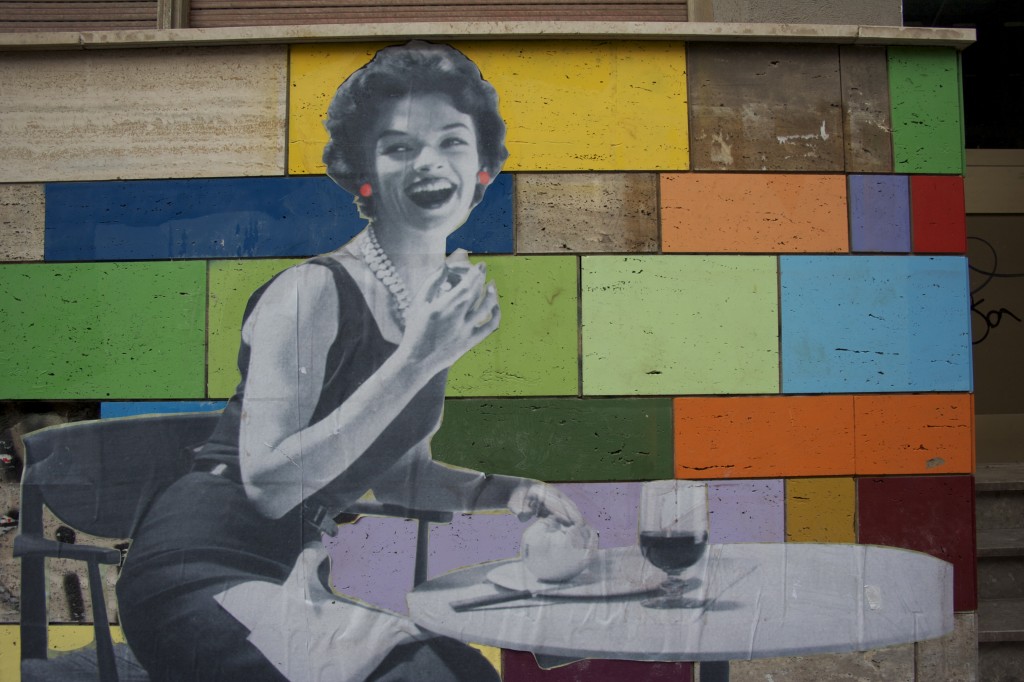
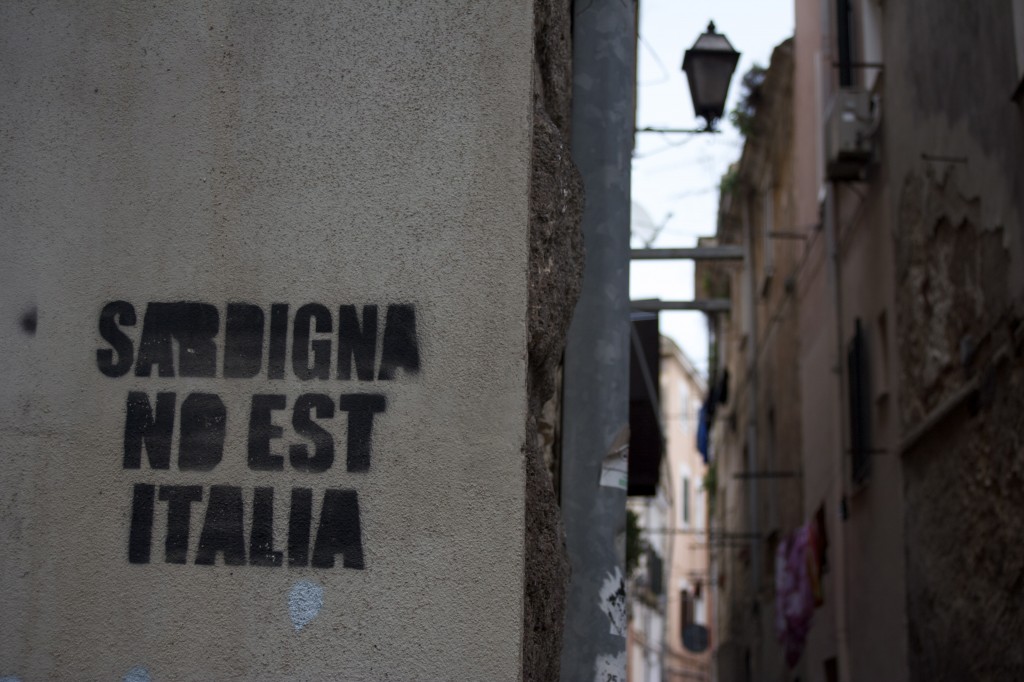
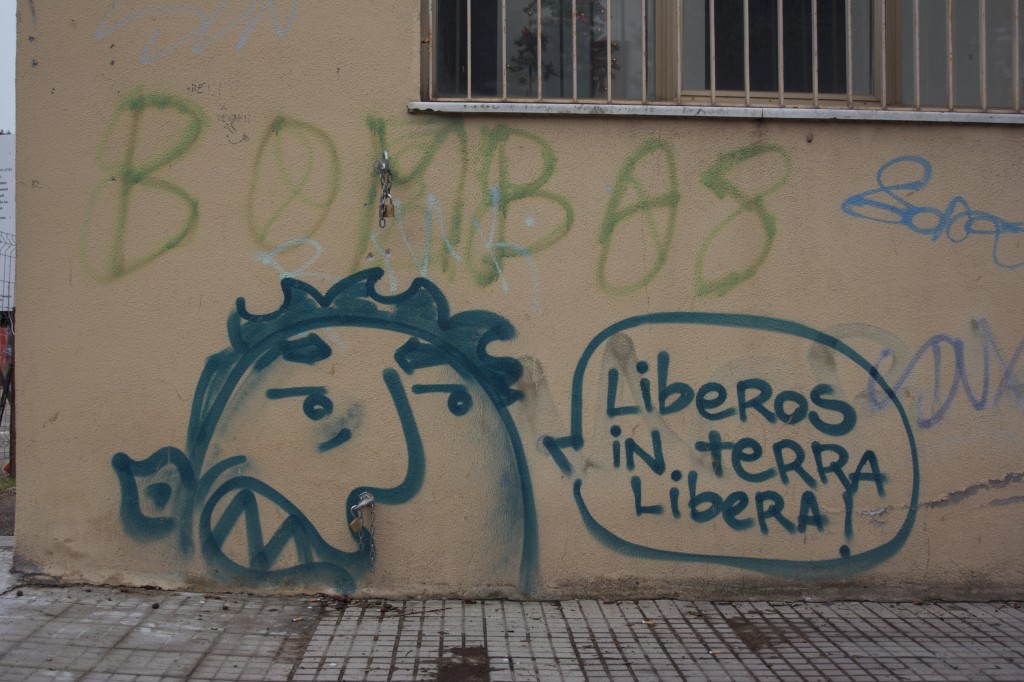
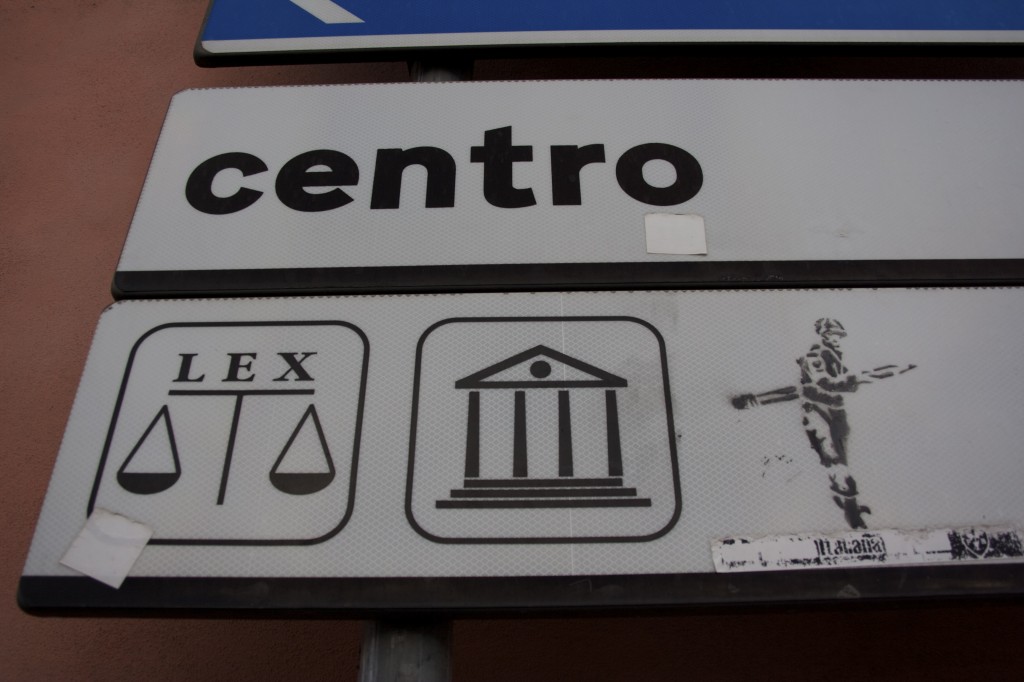
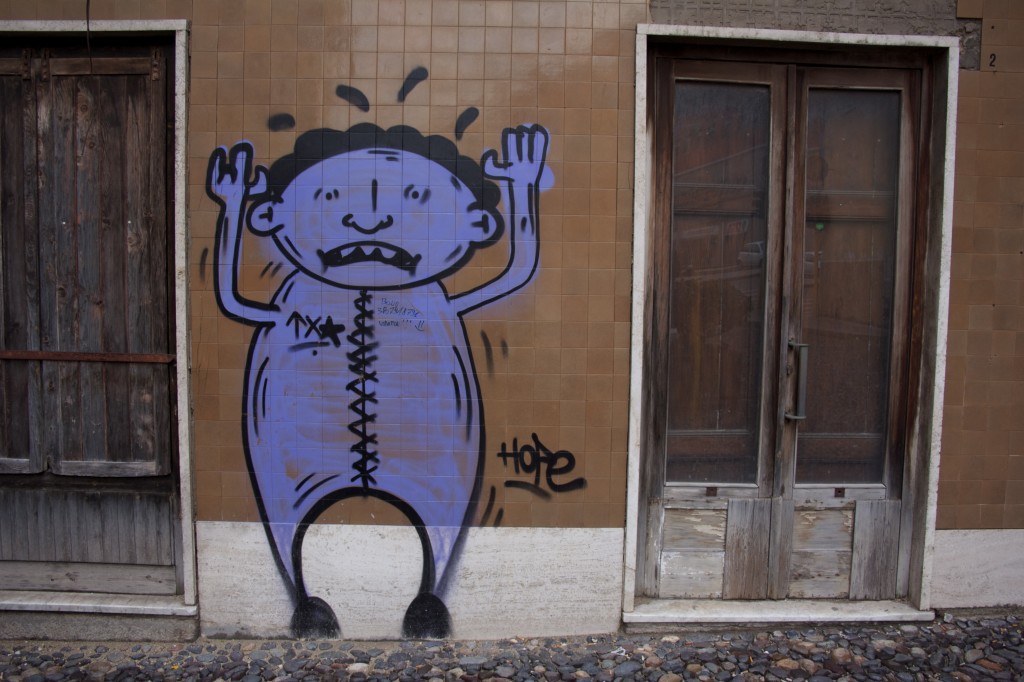
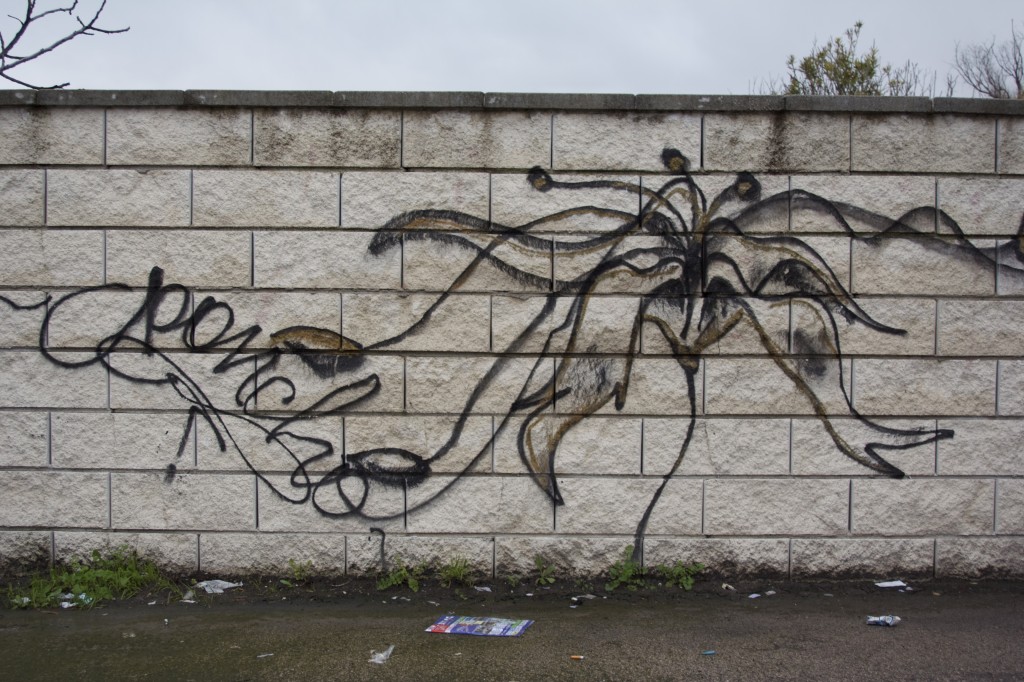
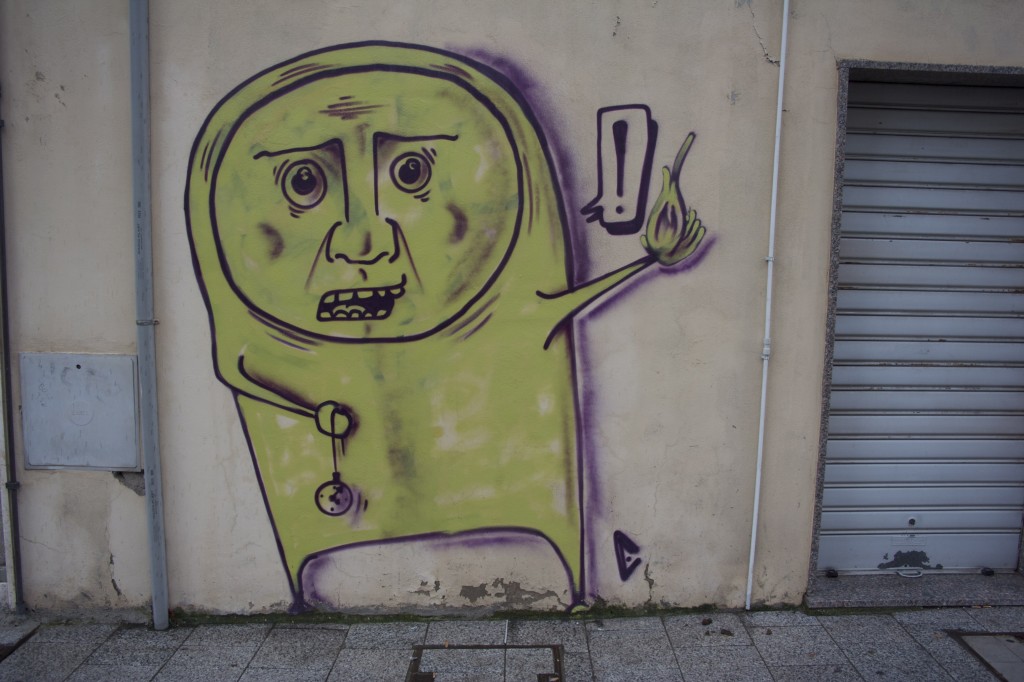
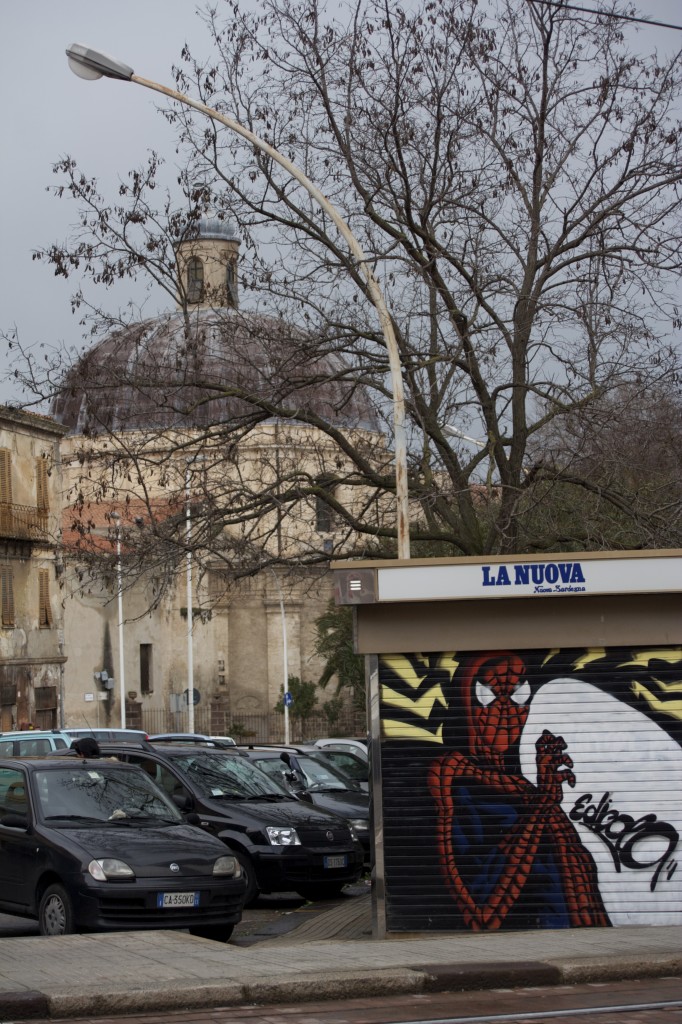
In Berlin I actually went on a walking tour of the city which was solely focused on the underground of Berlin and all the street art, it was really interesting! Would definitely recommend it..